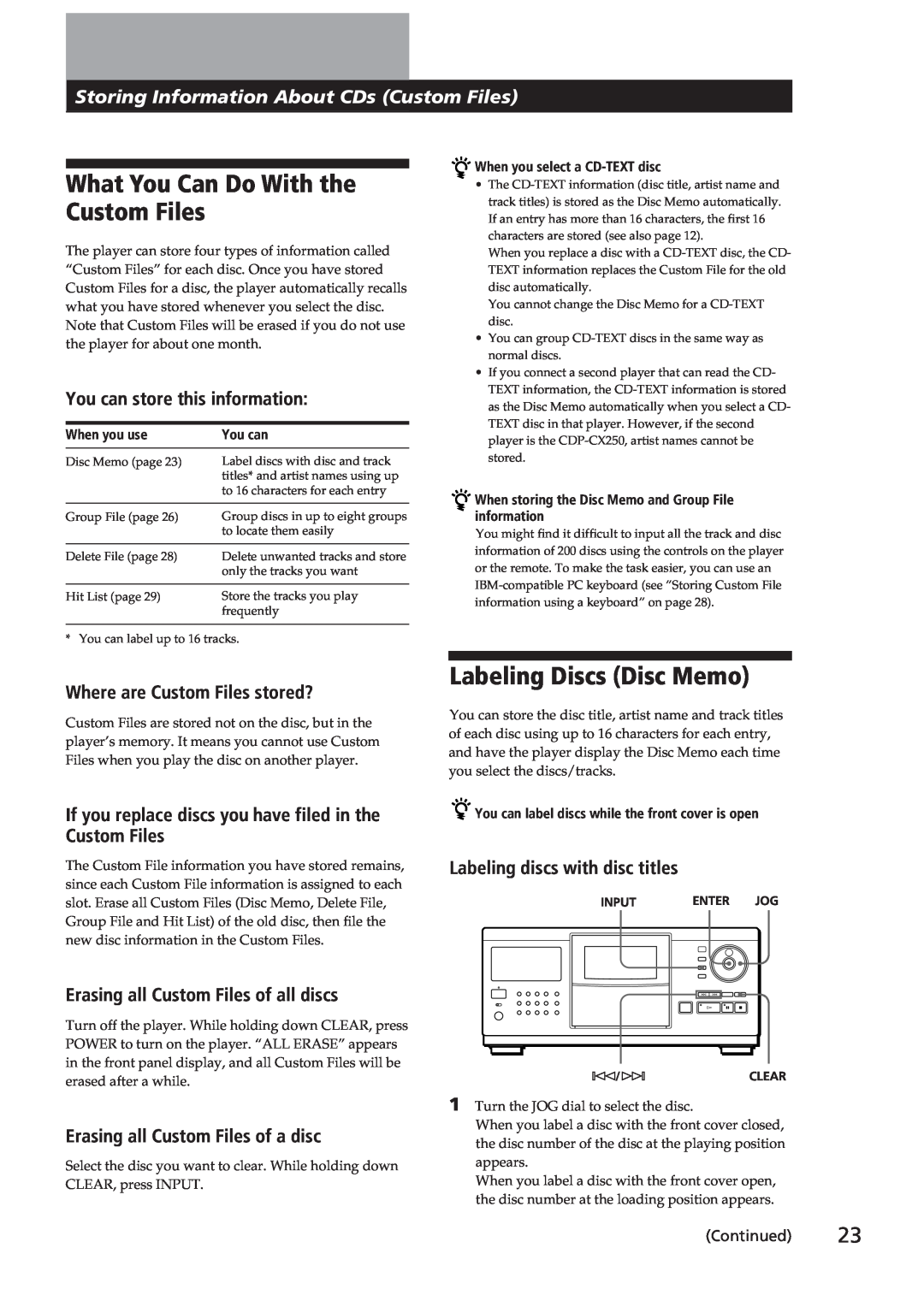
Storing Information About CDsStoring(CustomInformationFiles) About CDs (Custom Files)
What You Can Do With the Custom Files
The player can store four types of information called “Custom Files” for each disc. Once you have stored Custom Files for a disc, the player automatically recalls what you have stored whenever you select the disc. Note that Custom Files will be erased if you do not use the player for about one month.
You can store this information:
When you use | You can |
|
|
Disc Memo (page 23) | Label discs with disc and track |
| titles* and artist names using up |
| to 16 characters for each entry |
|
|
Group File (page 26) | Group discs in up to eight groups |
| to locate them easily |
|
|
Delete File (page 28) | Delete unwanted tracks and store |
| only the tracks you want |
|
|
Hit List (page 29) | Store the tracks you play |
| frequently |
|
|
* You can label up to 16 tracks.
Where are Custom Files stored?
Custom Files are stored not on the disc, but in the player’s memory. It means you cannot use Custom Files when you play the disc on another player.
If you replace discs you have filed in the Custom Files
The Custom File information you have stored remains, since each Custom File information is assigned to each slot. Erase all Custom Files (Disc Memo, Delete File, Group File and Hit List) of the old disc, then file the new disc information in the Custom Files.
Erasing all Custom Files of all discs
Turn off the player. While holding down CLEAR, press POWER to turn on the player. “ALL ERASE” appears in the front panel display, and all Custom Files will be erased after a while.
Erasing all Custom Files of a disc
Select the disc you want to clear. While holding down CLEAR, press INPUT.

 When you select a
When you select a CD-TEXT disc
•The
When you replace a disc with a
You cannot change the Disc Memo for a
•You can group
•If you connect a second player that can read the CD- TEXT information, the
![]()
![]() When storing the Disc Memo and Group File information
When storing the Disc Memo and Group File information
You might find it difficult to input all the track and disc information of 200 discs using the controls on the player or the remote. To make the task easier, you can use an
Labeling Discs (Disc Memo)
You can store the disc title, artist name and track titles of each disc using up to 16 characters for each entry, and have the player display the Disc Memo each time you select the discs/tracks.
 You can label discs while the front cover is open
You can label discs while the front cover is open
Labeling discs with disc titles
INPUT | ENTER |
| JOG | ||||
|
|
|
|
|
|
|
|
|
|
|
|
|
|
|
|
|
|
|
|
|
|
|
|
1Turn the JOG dial to select the disc.
When you label a disc with the front cover closed, the disc number of the disc at the playing position appears.
When you label a disc with the front cover open, the disc number at the loading position appears.
(Continued) 23
